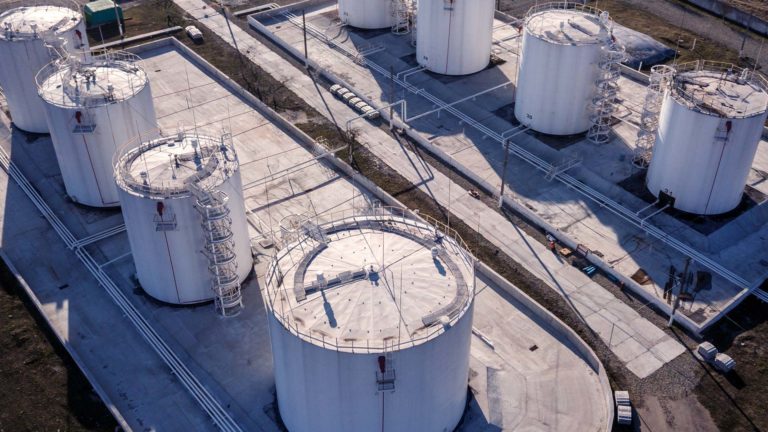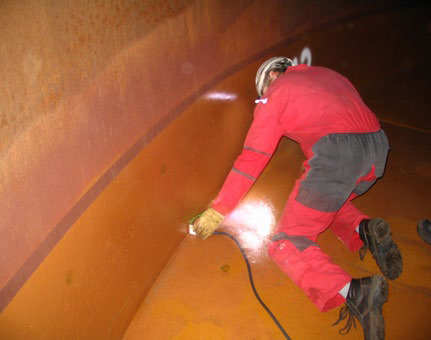Understanding the Trick Steps in Tank Welding Inspection Procedures
Understanding the Trick Steps in Tank Welding Inspection Procedures
Blog Article
Comprehensive Overview to Effective Container Welding Inspection Techniques and Ideal Practices for High Quality Assurance
In the realm of storage tank welding, extensive assessment methods are extremely important for protecting architectural integrity and ensuring compliance with industry guidelines. This guide presents a structured strategy to numerous examination approaches, including visual evaluations and non-destructive screening, which play an important function in spotting flaws before they intensify into major concerns. Furthermore, the value of thorough paperwork and the application of continuous improvement techniques can not be overemphasized. As we explore these important components, it becomes clear that a positive evaluation strategy is not simply helpful, but important for operational success in environments taking care of unsafe products.
Relevance of Tank Welding Examination

Tank welding assessment functions as a preventative measure, determining possible defects such as fractures, porosity, or inappropriate joint penetration before they rise right into serious problems. Normal inspections not only adhere to sector guidelines and standards however also improve the durability of the containers, reducing the need for costly repair services or substitutes.

Visual Evaluation Methods
Utilizing methodical visual inspection strategies is critical for analyzing the top quality and honesty of bonded joints in containers. This approach functions as the initial line of protection in identifying possible flaws such as splits, undercuts, and not enough infiltration. The assessor ought to approach the task with an eager eye, making use of proper tools like magnifying glasses, flashlights, and mirrors to enhance visibility.
During the inspection process, the inspector needs to review the weld account, ensuring it follows specified requirements and standards (Tank Welding Inspection). This includes examining the grain size, height, and fusion with the base product. Examiners ought to also pay attention to the bordering areas for signs of thermal distortion or contamination that might impact the weld's performance
Documents of searchings for is vital; inspectors need to tape any kind of abnormalities, categorizing them by seriousness for further examination. This methodical approach not just aids in immediate problem recognition however also adds to long-term quality control by making sure compliance with industry criteria. Regular training and calibration of aesthetic evaluation techniques better improve the integrity of evaluations, ultimately causing safer and a lot more durable storage tank structures.
Non-Destructive Evaluating Approaches
Non-destructive screening (NDT) techniques are frequently used in tank welding assessments to assess the stability of welded joints without jeopardizing their architectural honesty. These methods are important for recognizing defects such as fractures, gaps, and inclusions that might bring about catastrophic failings if left undetected.
Typical NDT techniques consist of ultrasonic testing (UT), which uses high-frequency acoustic waves to detect internal defects; radiographic screening (RT), using X-rays or gamma rays to visualize weld structures; and magnetic bit screening (MT), which discloses surface and near-surface stoppages in ferromagnetic materials (Tank Welding Inspection). Fluid penetrant testing (PT) is also commonly utilized, capable of identifying surface-breaking flaws by using a fluorescent or shade contrast dye
Each NDT method has its particular applications and benefits, making it vital for examiners to select the ideal method based on the product and the sort of weld being examined. The combination of these NDT techniques into the inspection process boosts the general high quality guarantee framework, making certain that bonded storage tanks satisfy security and performance requirements. Eventually, NDT plays an essential role in maintaining the integrity and durability of tank structures in different industrial applications.

Documentation and Reporting
Guaranteeing extensive paperwork and coverage throughout tank welding inspections is crucial for preserving compliance with industry requirements and assisting in efficient communication amongst look at this web-site stakeholders. Correct documents works as a detailed document of evaluation activities, findings, and any rehabilitative activities taken throughout the welding procedure. This details is crucial not just for quality control but additionally for audits and regulative evaluations.

A well-structured assessment report should consist of information such as the date of inspection, names of inspectors, welding procedures used, materials used, and any kind of variances from established standards. In addition, photos and representations can enhance the quality of the report, providing visual context to the findings. It is also crucial to document any non-conformities in addition to their resolution, guaranteeing that all stakeholders are educated of prospective risks and the steps taken to alleviate them.
Furthermore, preserving a centralized data source for all inspection records allows for very easy retrieval and testimonial, promoting a society of transparency and responsibility. By prioritizing careful documents and reporting, companies can not only promote quality control but likewise reinforce their online reputation within the sector, ultimately causing enhanced more security and functional efficiency.
Continuous Improvement Practices
Constant enhancement practices are important for enhancing the quality and efficiency of container welding examinations. One effective approach includes routine training and upskilling of evaluation personnel to remain abreast of the most recent welding modern technologies and requirements.
Furthermore, utilizing data-driven analysis permits companies to track evaluation results, recognize patterns, and identify areas for improvement. Utilizing tools such as source analysis can assist in recognizing the underlying problems leading to problems, enabling targeted treatments. In addition, getting feedback from examination groups and stakeholders creates a collaborative setting that motivates cutting-edge options.
Integrating innovative innovations, such as automated examination systems and real-time surveillance, can significantly boost the accuracy and rate of evaluations. Normal audits of the evaluation procedures also contribute to a culture of liability and constant improvement. Ultimately, these continual improvement techniques not only boost the high quality of container welding examinations however additionally add to general functional excellence and customer complete satisfaction.
Verdict
Finally, efficient container welding evaluation is essential for ensuring the structural stability and safety and security of storage space systems, specifically those dealing with harmful materials. Using a mix of visual examination techniques and non-destructive testing approaches promotes the early recognition of issues, thereby keeping conformity with industry requirements. Furthermore, durable documentation and a dedication to continual improvement enhance high quality guarantee techniques. Inevitably, these measures contribute considerably to functional quality and the avoidance look at this web-site of possible safety risks.
Report this page